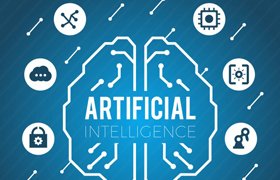Leveraging Artificial Intelligence In Digitization
Home » Leveraging Artificial Intelligence In Digitization
- April 10, 2018

Digitization is a necessity today – both for restoring and making it searchable. Be it physical libraries or digital media, media organizations and content owners are investing in digitization and archiving of legacy content. Organizations often spend hours in recreating or searching for content that already exists. Aged and untreated content, discounting metadata, and not choosing the right storage solution often takes a hit on the broadcasters.
While you’re oblivious, artificial intelligence (AI) is changing this scenario. Think of personalized playlists on YouTube or Spotify or recommendations on Netflix and Amazon Prime; broadcasters are using AI to curate a selection of tailormade content.
Few weeks after Donald Trump was elected, the Internet Archive’s TV News Archive aggregated more than 520 hours of televised Trump speeches, debates, interviews, and other broadcasts way back from 2009. Thanks to the Trump Archive, the footage doesn’t get lost in the crowd of news giving journalists, scholars and citizens a chance can track and analyze Trump’s statements on public policy issues.
Netflix claims to save about US$1bn annually due to AI technology’s ability to automate workflows and reduce customer churn.
After Wimbledon 2017, IBM Watson used a cognitive algorithm to produce highlight reels of what it believed were the best shots of the tournament. By automatically analyzing audio and video from the footage to identify highlight worthy shots and points, artificial intelligence saved hundreds of manhours of editors.
Here are five ways in which artificial intelligence is revolutionizing the way we archive, process, and store documents and extract information out of it.
Automated processing
Optical character recognition can recognize texts. AI can additionally read, classify, and automate workflows based on that information in minutes. Initially fed with a set of rules, AI uses machine learning to improve its identification and processing capabilities.
Data extraction
Data extraction reaches a whole new level with AI-powered document management system, which can accurately read the information and understand the context.
Document clustering
AI can also group unclassified documents based on topics, which can help organizations understand the documents within a larger context, find resemblances, and draw conclusions that would otherwise be time-consuming or impossible.
Advanced security
Document management system powered by AI can help impose user access. By using secure biometric techniques like facial recognition to identify employees who can access the data, it can prevent unauthorized viewing or alteration of documents.
Data analytics
Cognitive platforms as a service (PaaS) like Microsoft Azure Cognitive Services and IBM Watson apply techniques like predictive analytics, machine learning, and data visualization to analyze the collected data to improve decision making.
The way ahead…
At IBC2017, for the first time, AI was one of the main themes, which speaks loads about its adoption. Recently, a company named Ripcord has patented and built robots to scan and sort a box full of paper from business cards to legal documents and enter the contents into a searchable database in the cloud. As AI adoption across industries is increasing, we can only hope to see better and faster analysis, and improved decision making across the broadcast industry.

